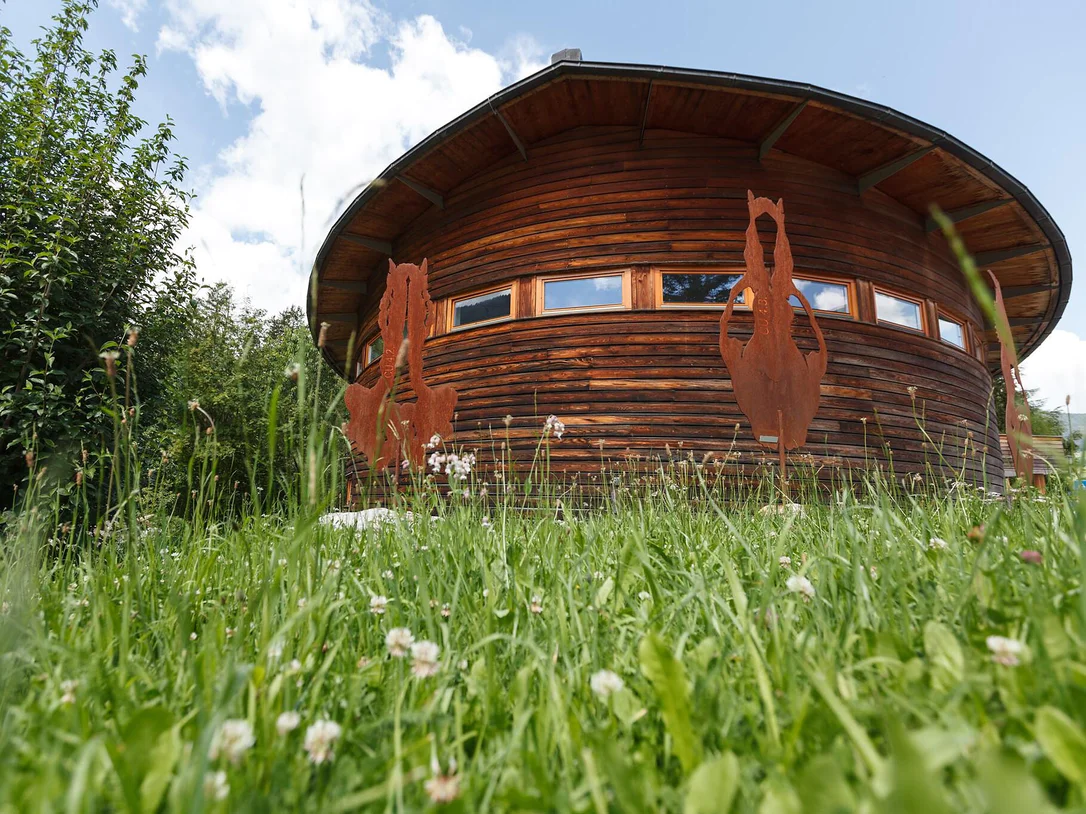Located in Enneberg / S. Vigilio at the entrance to Val de Mareo valley, nature park house Fanes-Senes-Prags / Fanes-Senes-Braies provides a wealth of information about nature park Fanes-Sennes-Prags / Fanes-Senes-Braies via interactive media, videos, and interpretive signs. The facility’s levels are linked via spiral ramps that enable visitors to reach the various galleries, which contain exhibitions on the following topics: the origins of the Dolomites; the 1987 discovery of the cave bear of Conturines; the park’s main habitats; and a three-dimensional relief showing the region’s geomorphology. The galleries also contain pictures of the park’s most impressive features. Next to Alpine pasture agriculture and the attendant Alpine pasture villages, the biodiversity of the park’s mountain meadows of Armentara and Plätzwiese, and the Ladin culture are on diplay. The center also features terrariums and a children’s area with games and crafts, as well as a library.











































































































